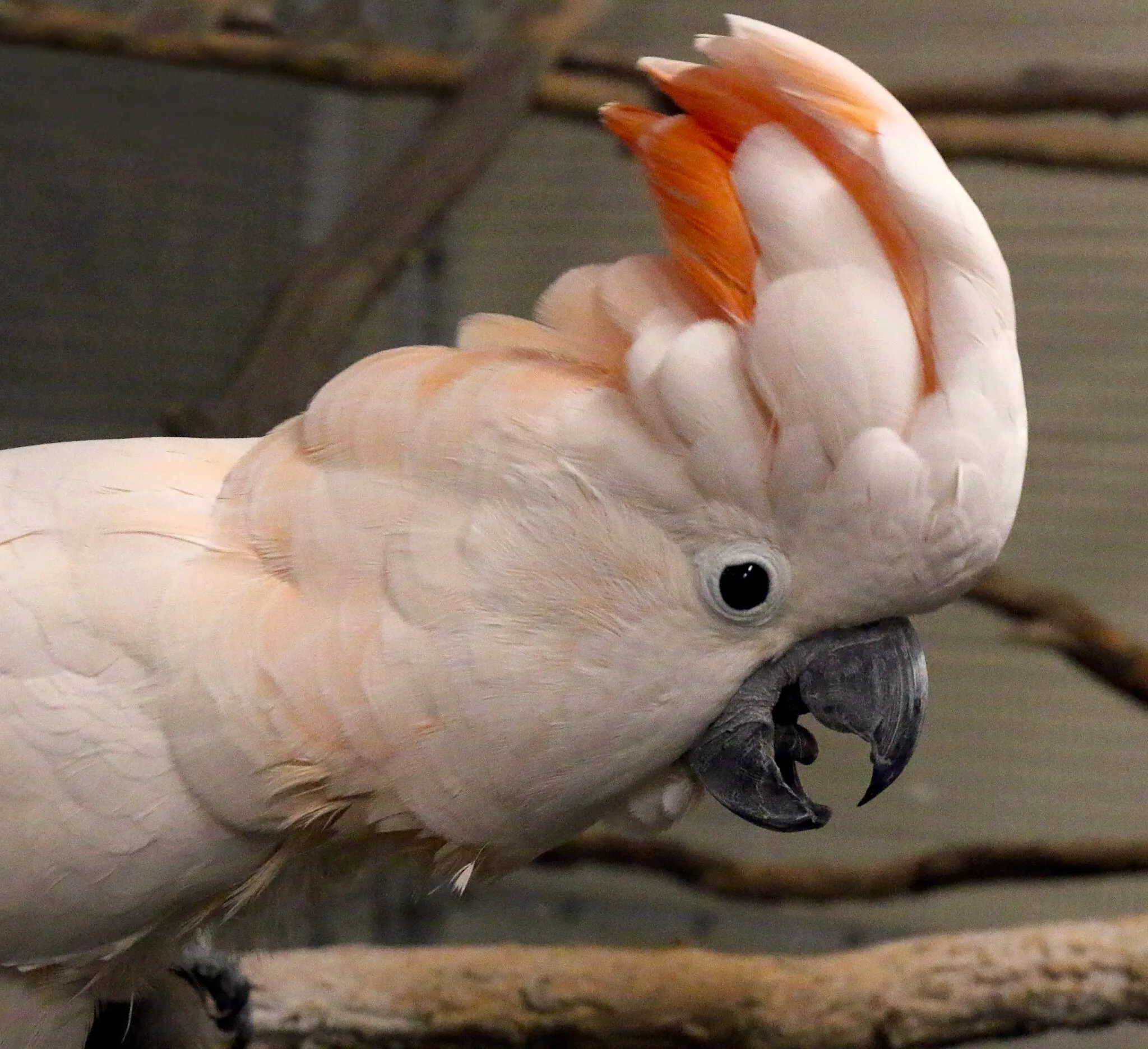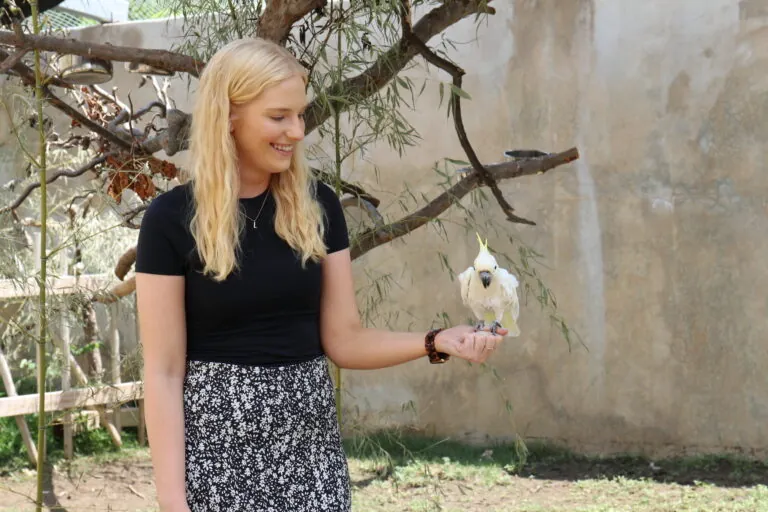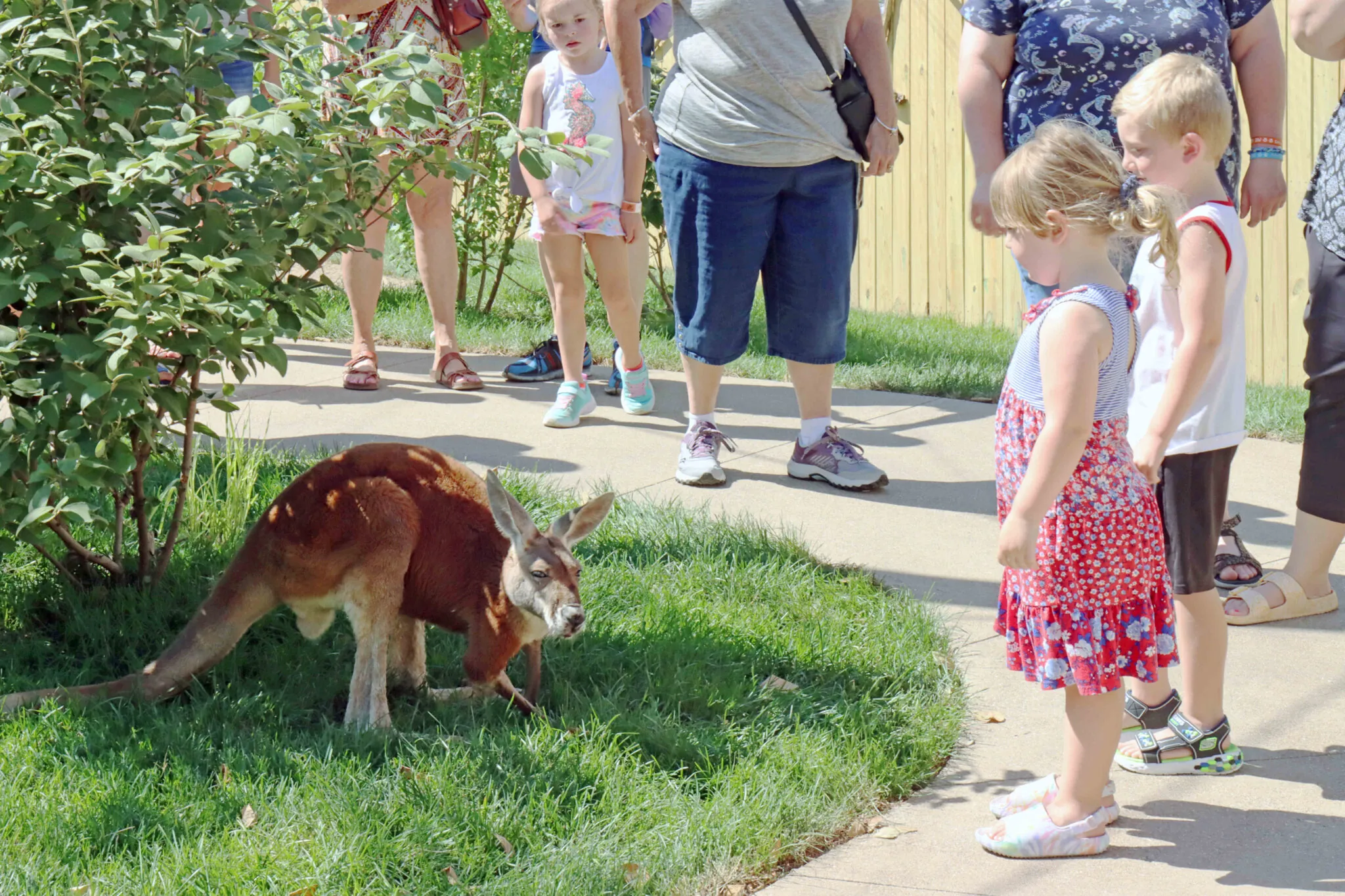-
Menu
- Plan Your Visit
- Meet The Animals
- Check Out Events
- Memberships
- About The Zoo
- Support the Zoo
- Conservation
- Education
- Groups & Private Events
- Zoo News
- Contact
- Indianapolis Prize
- Global Center for Species Survival
- Schedule
- Donate
- Membership
- Tickets

- Plan Your Visit
- Meet The Animals
- Check Out Events
- Memberships
- About The Zoo
- Support the Zoo
- Conservation
- Education
- Groups & Private Events
- Zoo News
- Contact
- Indianapolis Prize
- Global Center for Species Survival

Cockatoos
About
Cockatoos are clever, curious parrots! About 22 cockatoo species call Australia and parts of Asia home. They have bodies with mostly white, black or grey feathers with pops of pink, yellow or orange—especially on their head crest. These feathers stand up tall when a cockatoo is excited! Like other parrots, cockatoos have strong, hooked bills and zygodactyl feet: two toes face forward and two face backward, which is a great adaptation for perching in trees.
Cockatoos usually live in forests, but some find a home in grasslands, mountains—or even urban areas near people! They are intelligent and social. Some cockatoos have been taught to mimic human speech.

Conservation
Cockatoos are popular pets. But some cockatoos are endangered in the wild due to habitat loss and illegal pet trading. Do your research before adopting a cockatoo as a pet and make sure it not one of the species that are endangered in the wild—and that you can care for a busy bird that can live for 60 years or more!

Have a close encounter with one of the Zoo’s cockatoo flock! Go behind the scenes and have a brief interaction with a cockatoo, perched on your arm.
WHERE ARE THEY AT THE ZOO?


Kangaroo Crossing
Discover a bit of Australia right here in Indianapolis! Enjoy a close-up visit with red kangaroos and colorful cockatoos, together in Kangaroo Crossing presented by Citizens Energy Group.
Thank you to our sponsor

